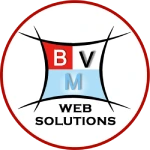Building Enterprise Applications with PHP: A Comprehensive Guide
In the world of web development, building robust and scalable enterprise applications is crucial for businesses looking to streamline operations and improve efficiency. One of the most widely used programming languages for this purpose is PHP. As an open-source, server-side scripting language, PHP powers millions of websites globally, providing developers with powerful tools to create dynamic and high-performance web applications.
In this comprehensive guide, we will explore the process of building enterprise applications using PHP, focusing on Core PHP, PHP Frameworks, and the key benefits of using PHP for web development. Whether you're a beginner or an experienced developer, this guide will provide valuable insights into website development and website building best practices.
Why Choose PHP for Building Enterprise Applications?
PHP, which stands for Hypertext Preprocessor, has been a staple in the web development industry for decades. Its versatility and compatibility with various databases and platforms make it an ideal choice for building enterprise-level applications. Here are some reasons why PHP stands out for enterprise application development:
1.Flexibility and Scalability
PHP provides developers with immense flexibility to scale applications as businesses grow. Whether it’s a small project or a large enterprise system, PHP offers scalability that ensures the application can handle a growing number of users and transactions.
2.Rich Ecosystem of Libraries and Frameworks
With a vast selection of pre-built libraries and frameworks, PHP reduces development time while enhancing the overall efficiency of the application. Frameworks like Laravel, and CodeIgniter provide ready-made solutions for common tasks, such as authentication, database management, and security, making it easier to build enterprise applications.
3.Security
Security is a paramount concern when it comes to enterprise applications. PHP comes with various built-in features to prevent common security vulnerabilities like SQL injection, XSS, and CSRF attacks, ensuring that applications are safe from cyber threats.
4.Cost-Effective
Since PHP is open-source, businesses can significantly reduce development costs. The abundance of PHP developers worldwide ensures that companies can find skilled professionals without spending a fortune, making PHP an affordable choice for building enterprise applications.
Core PHP vs. PHP Frameworks for Enterprise Applications
When it comes to building enterprise applications, developers can either use Core PHP or choose a PHP framework. Let’s take a look at both options:
Core PHP
Core PHP refers to the use of PHP without any third-party libraries or frameworks. This approach allows developers to build custom applications from scratch, providing full control over the project. While it offers flexibility, using Core PHP for enterprise applications can be time-consuming, as developers need to handle everything from routing and database management to security and error handling manually.
However, Core PHP can be ideal for small to medium-sized enterprise applications where developers want to have complete control over the project’s architecture and functionality.
PHP Frameworks
PHP frameworks are pre-built structures that streamline web application development. They offer a set of reusable components and tools to speed up the development process. Frameworks like Laravel, CodeIgniter Framework provide a solid foundation for building scalable, secure, and maintainable enterprise applications.
Here’s a look at some popular PHP frameworks:
- Laravel: Known for its elegant syntax, Laravel is one of the most popular PHP frameworks for web development. It offers features like Eloquent ORM, Blade templating, and built-in authentication, making it an excellent choice for building complex enterprise applications.
- CodeIgniter: A lightweight framework, CodeIgniter is perfect for developers looking for simplicity and speed. Its small footprint and rich set of libraries make it a great choice for developing web applications without unnecessary complexity.
Key Steps in Building Enterprise Applications with PHP
Now that we’ve explored the benefits of PHP and its frameworks, let’s dive into the steps involved in building enterprise applications:
1. Requirement Analysis and Planning
Before jumping into development, it’s essential to understand the business requirements and map out the application's functionality. This step involves collaborating with stakeholders to define features, design user interfaces, and determine the overall scope of the project.
2. Choosing the Right PHP Framework or Core PHP
Based on the project requirements, developers need to decide whether to use Core PHP or choose a PHP framework. For large and complex applications, a framework like Laravel or CodeIgniter is recommended, as it provides built-in features to handle common tasks and ensures maintainability.
3. Database Design and Integration
Enterprise applications require efficient database management systems to store and retrieve data. PHP works seamlessly with MySQL, PostgreSQL, and other relational databases. During this stage, developers will design the database schema, set up relationships, and integrate the database into the application.
4. Developing the Application
With the planning and design in place, developers can begin coding the application. This step involves building the user interface, implementing business logic, and ensuring smooth integration with external services and APIs.
5. Testing and Debugging
Thorough testing is crucial to ensure that the application works as expected. Developers need to conduct various tests, such as unit testing, integration testing, and performance testing, to ensure the application’s stability and reliability.
6. Deployment and Maintenance
Once the application passes all tests, it’s time to deploy it to a production environment. After deployment, ongoing maintenance is required to address bugs, add new features, and ensure the application remains up-to-date with the latest security patches.
Best Practices for Website Development with PHP
When building enterprise applications with PHP, it’s essential to follow best practices to ensure the success of the project. Here are some key recommendations:
- Follow MVC Architecture: The Model-View-Controller (MVC) architecture helps organize code, making it easier to maintain and scale the application over time.
- Use Version Control: Tools like Git help developers manage code versions, collaborate with teams, and track changes made to the project.
- Implement Security Measures: Always sanitize user inputs, hash passwords, and use secure protocols to protect your application from vulnerabilities.
- Optimize Performance: Focus on optimizing database queries, minimizing HTTP requests, and utilizing caching to enhance application performance.
- Stay Up-to-Date with PHP: Ensure that you’re using the latest version of PHP to take advantage of new features, performance improvements, and security enhancements.
Conclusion
Building enterprise applications with PHP offers numerous benefits, including flexibility, scalability, and security. Whether you’re using Core PHP for custom development or leveraging the power of PHP frameworks, PHP remains one of the most popular and effective programming languages for web development. By following best practices and utilizing the right tools, developers can create powerful, reliable, and scalable applications that meet the needs of businesses today.
At BVM Web Solutions, we specialize in website development and website building, offering top-notch PHP development services to help businesses grow and thrive in the digital world. Our experienced developers are committed to delivering high-quality PHP-based solutions tailored to your specific requirements. Contact us today to get started on building your enterprise application!








